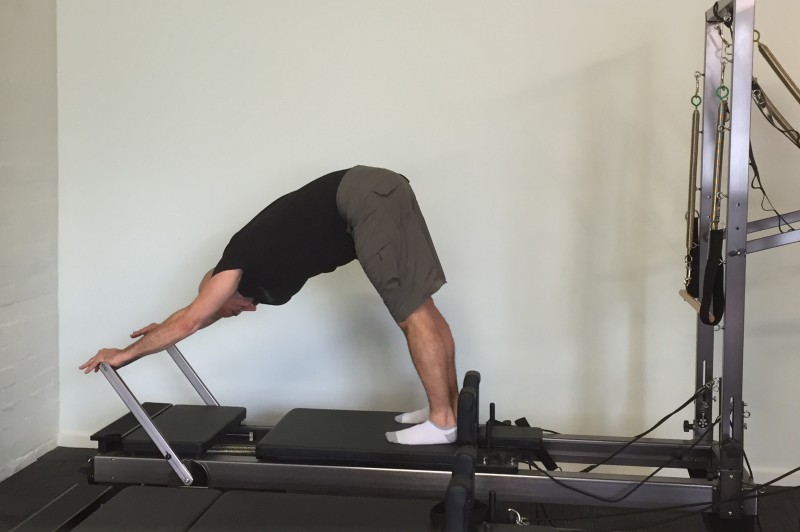…on Low Back Pain – the most prevalent musculo-skeletal condition in the developed world is low back pain. It is also one of the most common causes of disability and lost work time in the developed world. It is estimated between 65% and 90% of adults will experience low back pain sometime in their life.

There are many studies on the effect pilates may have on low back pain. One randomised controlled trial of 60 participants with mild to moderate back pain demonstrated statistically significant improvement in the pilates group; participants were randomly allocated into either a group that undertook small class (2-4 participants) pilates sessions twice a week for 90 days and could continue with their use of NSAIDs (non-steroidal anti-inflammatory drugs like neurofen or ibuprofen) as needed and a control group that were advised to just continue their use of NSAID as needed.
Both groups were asked to record their daily NSAID usage and were assessed by an independent examiner on 6 parameters:
- Pain
- Function
- Quality of life
- Satisfaction with treatment
- Flexibility
- Daily consumption of NSAIDs
Data was collected prior to commencement, half way through the trial and at the end of the experiment. The participants were also independently assessed 90 days after the trial ended.
Reported pain and function improved for the pilates group.
Daily NSAID consumption for the control group remained the same while the pilates group recorded a significant reduction in NSAID use across the trial period, suggesting sustained improvements in pain. Importantly, the pilates participants were still taking less painkillers 90 days after the experiment ended!
…on Falls Prevention – falls are a longstanding problem for older adults in our community. Research indicates the intrinsic risk factors the increase the likelihood of a fall as we get older are:
- Impaired balance;
- Reduced mobility and flexibility; and
- Declining postural stability

Some people also develop a fear of falling after a non-injurious fall and fear of falling has been linked to greater balance and gait problems as the fearful person over-compensates to avoid another fall. This sets up a vicious circle that discourages people from undertaking gentle physical activity (e.g. walking to the shops) and increases the likelihood of an injury in a subsequent fall.
Pilates synergistic movement patterns of isometric, concentric and concentric exercises can easily be translated into functional activities to address these intrinsic risk factors as well as improve the confidence of someone who has fallen.
A quasi-experimental study of 35 participants in the United States were tested for the risk of a fall before and after an 8 week Pilates programme. The risk of a fall was assessed using 3 standardised tests:
- the Timed Up & Go (a measure of mobility),
- the Turn 180 (a measure of postural stability) and
- the Forward Reach (a measure of balance).
The assessors were not part of the research team and did not know the specific purpose of the assessment (i.e. “blind examiners”) and so can be considered non-biased. Participants were asked to also complete a monthly calendar recording any falls they had during the experiment.
POSITIVE OUTCOMES
Results from this experiment are re-assuring that the risk of a fall in the older population can be reduced or eliminated. At commencement, 20 of the participants could not perform the Timed Up & Go in under 10 seconds whereas after 8 weeks of pilates only 7 still showed this sign of impaired mobility. The number of participants who could not complete the Turn 180 in less than 4 steps dropped by 90% during the programme while the number of participants who could not reach forward more than 10 inches declined by 46%.
In their initial interview, 10 participants mentioned having no or little confidence in their balance or ability to avoid a fall. At the end of the programme only 3 participants still felt this way; a fantastic outcome for improving the activity levels of these participants.



